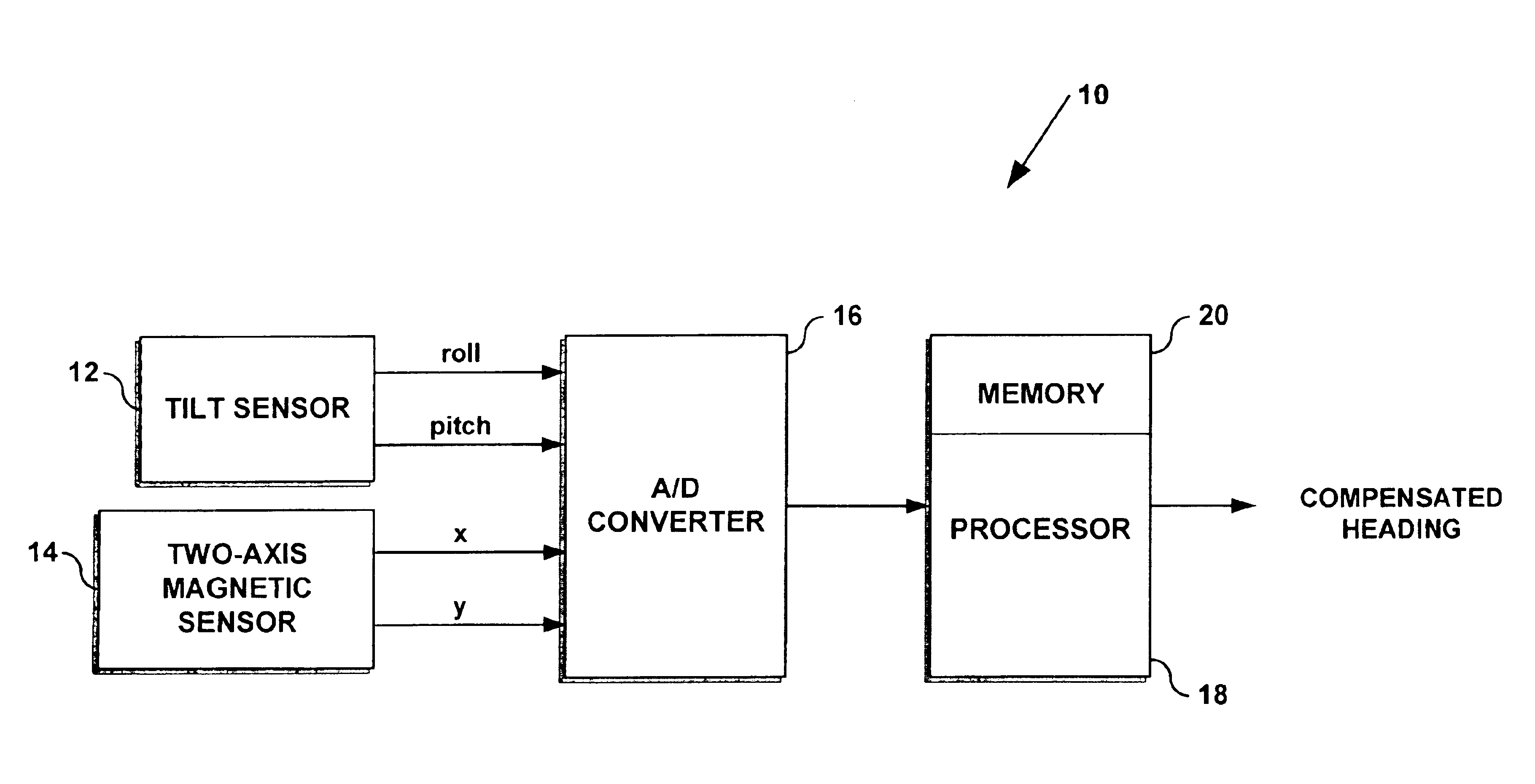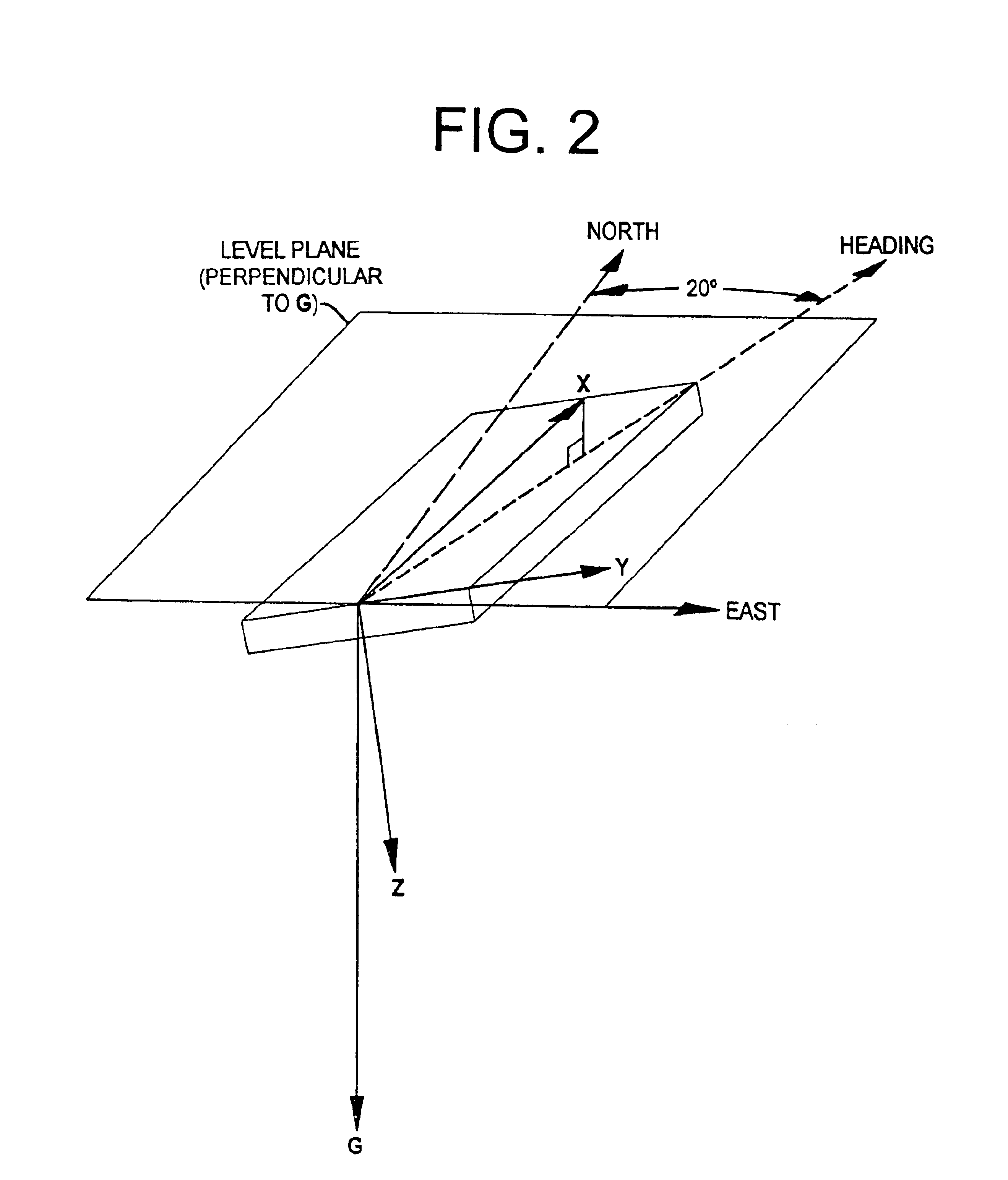System for using a 2-axis magnetic sensor for a 3-axis compass solution
a magnetic sensor and solution technology, applied in the field of electronic compasses, can solve the problem of not having enough space for a 3-axis magnetic sensor
- Summary
- Abstract
- Description
- Claims
- Application Information
AI Technical Summary
Benefits of technology
Problems solved by technology
Method used
Image
Examples
Embodiment Construction
In exemplary embodiments, electronic compasses use sensors capable of producing an electrical signal that is proportional to the direction of the Earth's magnetic field. For highly miniaturized recreational electronic compasses that provide a readout of 8 compass points (or more), a system must be able to resolve direction to the nearest 16°, which is easily within the sensitivity of many magnetic sensors, such as anisotropic magnetoresistive sensors (AMRs), Hall-effect, GMRs, inductive coil, and flux-gate sensors.
Typically, to compensate for compass tilt in order to provide at least 16° accuracy, a 3-axis magnetic sensing system and a tilt sensor are required to solve equations (1), (2), and (3). This is because equations (2) and (3), as can be seen, require magnetic field measurements in the x-, y-, and z- directions and tilt measurements in 2 axes. By mathematically calculating field strength along one axis (such as the z-axis), however, a 2-axis, rather than a 3-axis magnetic fi...
PUM
 Login to View More
Login to View More Abstract
Description
Claims
Application Information
 Login to View More
Login to View More - R&D
- Intellectual Property
- Life Sciences
- Materials
- Tech Scout
- Unparalleled Data Quality
- Higher Quality Content
- 60% Fewer Hallucinations
Browse by: Latest US Patents, China's latest patents, Technical Efficacy Thesaurus, Application Domain, Technology Topic, Popular Technical Reports.
© 2025 PatSnap. All rights reserved.Legal|Privacy policy|Modern Slavery Act Transparency Statement|Sitemap|About US| Contact US: help@patsnap.com



